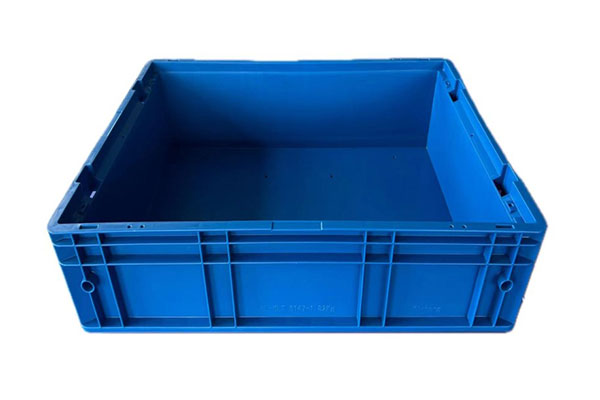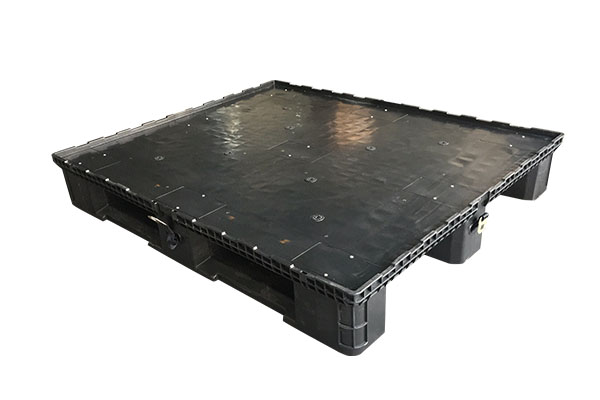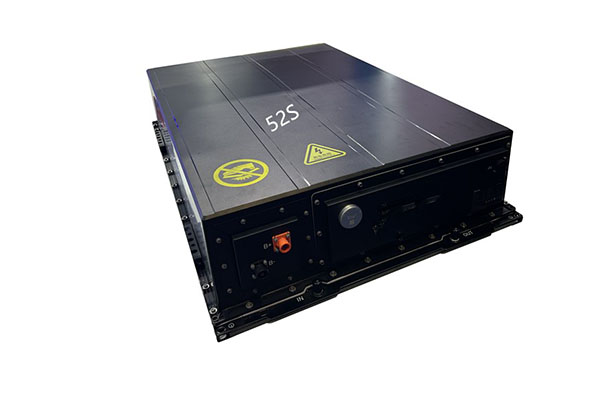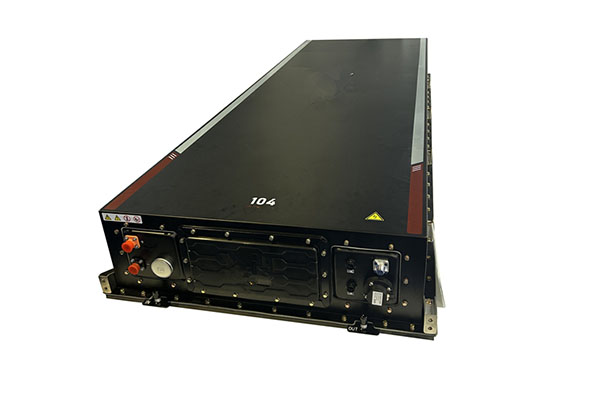How can plastic pallet be compatible with forklifts and stackers for efficient operation?
Release Time : 2025-06-16
In modern warehousing and logistics scenarios, plastic pallet has long surpassed the single role of "cargo carrier" and has become a "nerve node" connecting automated equipment such as forklifts and stackers. When pallets and equipment achieve seamless collaboration, logistics efficiency will break through the shackles of manual operation and enter a new era of intelligence and unmanned operation. This compatibility is not accidental, but is achieved through the deep integration of material properties, structural design and industry standards.
Material properties: the physical basis of rigidity and flexibility
The core advantage of plastic pallet lies in the plasticity of its material. Unlike the characteristics of wooden pallets that are easy to crack and metal pallets that are easy to deform, high-molecular polyethylene or polypropylene materials give pallets the physical properties of "rigidity and flexibility". In forklift operations, pallets need to withstand the instantaneous impact force when the fork teeth are inserted, and plastic pallet uses an integrated molding process to evenly distribute the force points to the overall structure to avoid the risk of fracture caused by local stress concentration. Its smooth surface and barb-free design not only reduces the friction loss between the fork teeth and the pallet, but also reduces operational errors caused by jamming.
In the high-density storage scenario of the stacker, the pallet needs to withstand the superposition pressure of multiple layers of goods. The plastic pallet improves the bending strength while maintaining lightness through the combination design of reinforcing ribs and honeycomb structure. This structure is like a "truss system" in a building, which converts vertical loads into lateral support forces to ensure that the pallet does not deform or collapse during long-term use. In addition, the corrosion resistance of plastic materials enables it to adapt to extreme environments such as cold storage and humid warehouses, avoiding equipment compatibility issues caused by rust or mildew.
Structural design: the art of balancing standardization and customization
The compatibility of plastic pallets with automated equipment is essentially a game of "standardization" and "customization". The internationally accepted pallet size (such as 1200mm×1000mm) provides the basis for the versatility of forklifts and stackers, but the demand for pallets in different industries varies greatly. For example, the fast-moving consumer goods industry requires pallets to have ventilation holes to accelerate the drying of goods, while the chemical industry requires the edges of pallets to be raised to prevent liquid leakage.
To resolve this contradiction, plastic pallet achieves "flexible adaptation under a standardized framework" through modular design. The bottom of the pallet adopts a nine-foot, Sichuan-shaped or double-sided grid structure, which can not only adapt to the width of the fork teeth of different forklift models, but also enhance the friction with the stacker fork through anti-slip pads. Some high-end pallets also reserve RFID chip slots, so that the equipment can automatically identify pallet information through wireless signals to achieve accurate positioning and scheduling of goods. This dual design of "hardware compatibility + information interconnection" makes pallets an "intelligent node" in the logistics system.
Human-machine collaboration: from passive load to active adaptation
In traditional logistics, pallets are only used as passive load-bearing tools, while modern plastic pallets actively adapt to the operation logic of equipment through design optimization. For example, the rounded corners of the pallet edge reduce collision damage during forklift operation, while the anti-slip stripe design improves the stability of the stacker when it runs at high speed. Furthermore, some pallet manufacturers and equipment manufacturers have jointly developed a "pallet-equipment collaborative system" that embeds pressure sensors or positioning chips at the bottom of the pallet to provide real-time feedback on the pallet status and cargo weight, helping the equipment to automatically adjust the operating parameters.
This collaboration is not only reflected in the physical level, but also extends to the optimization of the operating process. For example, in an automated warehouse, the standardized size of the pallet strictly matches the fork spacing of the stacker to ensure that the cargo can be stored and retrieved with millimeter-level accuracy; in the unmanned forklift scenario, the reflective logo or QR code at the bottom of the pallet provides a visual reference for the navigation system, enabling the vehicle to plan the route autonomously. The upgrade of the pallet from a "cargo carrier" to a "process medium" has promoted the transformation of logistics operations from "manual experience driven" to "data intelligence driven".
Future trends: pallets as a service, equipment as a partner
With the penetration of the Internet of Things and artificial intelligence technologies, the compatibility of plastic pallets and automated equipment will enter a new stage. In the future, pallets may have more sensors built in to monitor the temperature, humidity and even vibration of the cargo in real time, and share data with the equipment through the cloud platform. For example, when a stacker detects an abnormal load on a pallet, it can automatically trigger an early warning and adjust the operation plan; while a forklift can optimize the driving route based on the pallet location information to avoid empty driving and congestion.
This deep collaboration will reshape the logistics ecosystem: pallets are no longer disposable consumables, but recyclable "smart assets"; equipment is no longer an isolated operating tool, but a "flexible system" that forms a dynamic response with the pallet. In this process, plastic pallet, with its lightweight, durability and plasticity, has become a bridge connecting the physical world and the digital world.
From the precise forking of forklifts to the three-dimensional storage of stackers, plastic pallet has achieved "seamless dialogue" with automated equipment through material innovation, structural optimization and intelligent upgrades. This compatibility is not only a breakthrough in technology, but also the underlying logic for improving logistics efficiency - when every pallet can become the "best partner" of equipment, the operation of the entire supply chain will be as efficient and smooth as precision machinery.
Material properties: the physical basis of rigidity and flexibility
The core advantage of plastic pallet lies in the plasticity of its material. Unlike the characteristics of wooden pallets that are easy to crack and metal pallets that are easy to deform, high-molecular polyethylene or polypropylene materials give pallets the physical properties of "rigidity and flexibility". In forklift operations, pallets need to withstand the instantaneous impact force when the fork teeth are inserted, and plastic pallet uses an integrated molding process to evenly distribute the force points to the overall structure to avoid the risk of fracture caused by local stress concentration. Its smooth surface and barb-free design not only reduces the friction loss between the fork teeth and the pallet, but also reduces operational errors caused by jamming.
In the high-density storage scenario of the stacker, the pallet needs to withstand the superposition pressure of multiple layers of goods. The plastic pallet improves the bending strength while maintaining lightness through the combination design of reinforcing ribs and honeycomb structure. This structure is like a "truss system" in a building, which converts vertical loads into lateral support forces to ensure that the pallet does not deform or collapse during long-term use. In addition, the corrosion resistance of plastic materials enables it to adapt to extreme environments such as cold storage and humid warehouses, avoiding equipment compatibility issues caused by rust or mildew.
Structural design: the art of balancing standardization and customization
The compatibility of plastic pallets with automated equipment is essentially a game of "standardization" and "customization". The internationally accepted pallet size (such as 1200mm×1000mm) provides the basis for the versatility of forklifts and stackers, but the demand for pallets in different industries varies greatly. For example, the fast-moving consumer goods industry requires pallets to have ventilation holes to accelerate the drying of goods, while the chemical industry requires the edges of pallets to be raised to prevent liquid leakage.
To resolve this contradiction, plastic pallet achieves "flexible adaptation under a standardized framework" through modular design. The bottom of the pallet adopts a nine-foot, Sichuan-shaped or double-sided grid structure, which can not only adapt to the width of the fork teeth of different forklift models, but also enhance the friction with the stacker fork through anti-slip pads. Some high-end pallets also reserve RFID chip slots, so that the equipment can automatically identify pallet information through wireless signals to achieve accurate positioning and scheduling of goods. This dual design of "hardware compatibility + information interconnection" makes pallets an "intelligent node" in the logistics system.
Human-machine collaboration: from passive load to active adaptation
In traditional logistics, pallets are only used as passive load-bearing tools, while modern plastic pallets actively adapt to the operation logic of equipment through design optimization. For example, the rounded corners of the pallet edge reduce collision damage during forklift operation, while the anti-slip stripe design improves the stability of the stacker when it runs at high speed. Furthermore, some pallet manufacturers and equipment manufacturers have jointly developed a "pallet-equipment collaborative system" that embeds pressure sensors or positioning chips at the bottom of the pallet to provide real-time feedback on the pallet status and cargo weight, helping the equipment to automatically adjust the operating parameters.
This collaboration is not only reflected in the physical level, but also extends to the optimization of the operating process. For example, in an automated warehouse, the standardized size of the pallet strictly matches the fork spacing of the stacker to ensure that the cargo can be stored and retrieved with millimeter-level accuracy; in the unmanned forklift scenario, the reflective logo or QR code at the bottom of the pallet provides a visual reference for the navigation system, enabling the vehicle to plan the route autonomously. The upgrade of the pallet from a "cargo carrier" to a "process medium" has promoted the transformation of logistics operations from "manual experience driven" to "data intelligence driven".
Future trends: pallets as a service, equipment as a partner
With the penetration of the Internet of Things and artificial intelligence technologies, the compatibility of plastic pallets and automated equipment will enter a new stage. In the future, pallets may have more sensors built in to monitor the temperature, humidity and even vibration of the cargo in real time, and share data with the equipment through the cloud platform. For example, when a stacker detects an abnormal load on a pallet, it can automatically trigger an early warning and adjust the operation plan; while a forklift can optimize the driving route based on the pallet location information to avoid empty driving and congestion.
This deep collaboration will reshape the logistics ecosystem: pallets are no longer disposable consumables, but recyclable "smart assets"; equipment is no longer an isolated operating tool, but a "flexible system" that forms a dynamic response with the pallet. In this process, plastic pallet, with its lightweight, durability and plasticity, has become a bridge connecting the physical world and the digital world.
From the precise forking of forklifts to the three-dimensional storage of stackers, plastic pallet has achieved "seamless dialogue" with automated equipment through material innovation, structural optimization and intelligent upgrades. This compatibility is not only a breakthrough in technology, but also the underlying logic for improving logistics efficiency - when every pallet can become the "best partner" of equipment, the operation of the entire supply chain will be as efficient and smooth as precision machinery.







